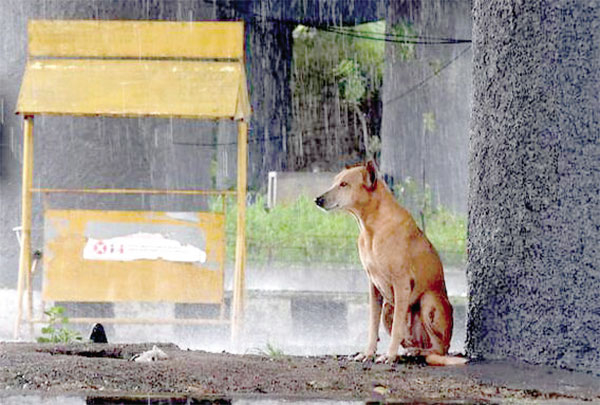The monsoon season brings much-needed relief from the scorching heat, but it also presents unique challenges for animals. From torrential rains and floods to changes in habitat and food availability, animals must adapt and overcome these hurdles to ensure their survival. Some of the problems animals face during the monsoon season and how they cope with these challenges are:
-
Increased Disease Risk: Monsoon rains create ideal breeding grounds for disease-carrying insects, increasing the risk of illnesses among animals. To combat this, some animals, like birds, modify their nesting behaviors to reduce the chance of mosquito breeding, while others develop immunity to certain diseases over time.
-
Reproduction Challenges: For animals with reproductive cycles tied to specific weather patterns, the unpredictability of the monsoon can disrupt breeding schedules. Delayed mating seasons may affect birth rates and population growth. In response, some species may have evolved to have more flexible breeding cycles or employ alternative strategies to ensure successful reproduction.
-
Predation and Disruption of Predatory Behavior: During heavy rain and reduced visibility, predators may face challenges in hunting and capturing prey. Conversely, prey animals may struggle to detect approaching predators, putting them at a disadvantage. As a coping mechanism, some predators become opportunistic scavengers during the monsoon, while prey animals adapt their behaviors to remain vigilant in adverse weather conditions.
-
Water Contamination: Pollution runoff from urban areas during the monsoon can contaminate water sources, affecting aquatic animals' health and well-being. Animals may seek out cleaner water bodies or adapt to tolerate increased pollution levels. Addressing water pollution is essential for safeguarding the health of aquatic ecosystems and the animals that rely on them.
-
Physical Discomfort: Heavy rains, strong winds, and thunderstorms can cause physical discomfort for animals without proper shelter. Species such as birds may huddle together or seek refuge in tree canopies, while terrestrial animals may burrow deeper underground or utilize natural shelters to avoid exposure to harsh weather conditions.
-
Habitat Loss and Flooding: Heavy rains and floods can result in the destruction of natural habitats, forcing animals to seek refuge in higher ground. Flooded burrows and nests can displace creatures, leaving them vulnerable to predators and starvation. To deal with habitat loss, animals may migrate to safer areas or find temporary shelters until the waters recede.
-
Food Scarcity: The abundance of rain may wash away vegetation and disperse small insects, affecting the food supply for herbivores and insect-eating animals. During this time, animals may travel longer distances in search of food, alter their diets, or rely on stored reserves until food sources become more readily available.
The monsoon season presents both challenges and opportunities for animals. While they must navigate through habitat loss, food scarcity, and disease risks, they also showcase incredible resilience and adaptability. By understanding the problems animals face and implementing conservation efforts, we can help ensure that these magnificent creatures continue to thrive amidst the seasonal monsoon challenges.
